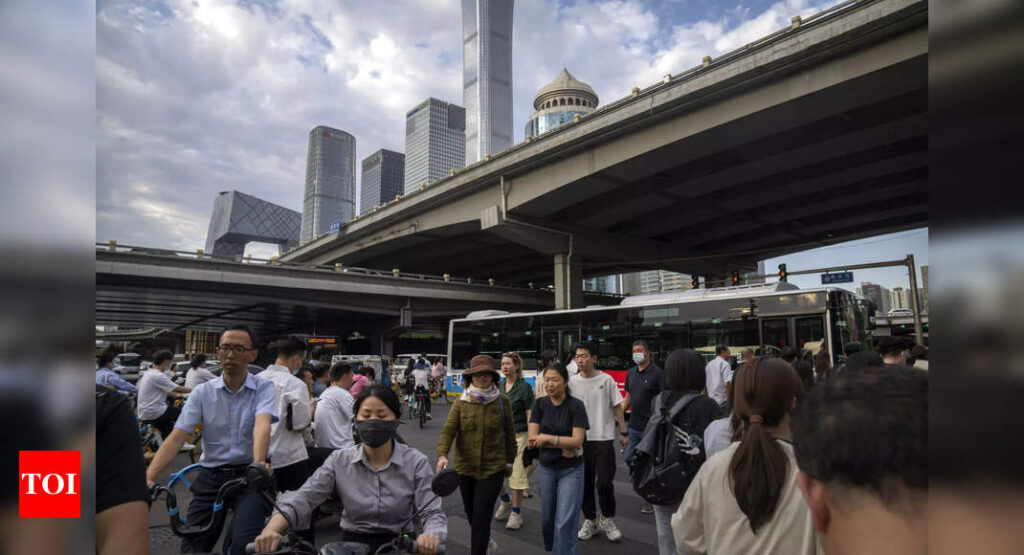[ad_1]
The consumer price index dropped 0.3% last month from a year earlier, the National Bureau of Statistics said Wednesday, marking its first decline since February 2021. Economists surveyed by Bloomberg had predicted a 0.4% decline in prices.
Producer prices fell for a 10th consecutive month, contracting 4.4% in July from a year earlier, slightly worse than expected. It’s the first time since November 2020 that both consumer and producer prices registered contractions.
China is experiencing a rare period of falling prices as consumer and business demand weakens after an initial burst in the first quarter following the ending of pandemic restrictions. A prolonged property market slump, plunging demand for exports and subdued consumer spending are weighing on the economy’s recovery.
The statistics bureau attributed the decline in consumers prices to the high base of comparison with last year, saying the contraction is likely to be temporary and consumer demand continued to improve in July.
“With the impact of a high base from last year gradually fading, the CPI is likely to rebound gradually,” Dong Lijuan, chief statistician at the NBS, said in rare additional comments to accompany the official data.
The core inflation measure, which excludes volatile food and energy costs, picked up to 0.8% from 0.4%, a sign of underlying, although subdued, demand in the economy. A breakdown of the consumer inflation figures showed prices for household goods, food and transport contracted, while prices of services spending, like recreation and education, climbing.
The Hang Seng China Enterprises Index trimmed an earlier loss of as much as 0.9% to trade 0.3% lower as of 9:50 a.m., while the onshore benchmark CSI 300 Index of stocks traded little changed.
Using the gross domestic product deflator — a measure of economy-wide prices — China was in deflation in the first half of the year. The International Monetary Fund defines deflation as “a sustained decline in an aggregate measure of prices,” such as the CPI or the GDP deflator.
While deflation boosts the case for the People’s Bank of China to add monetary stimulus, the central bank is facing several constraints that’s making it cautious, including a weaker yuan and elevated debt levels in the economy. Analysts expect the PBOC to take moderate steps to ease monetary policy for the rest of this year.
Unlike the temporary drop in consumer prices in late 2020 and early 2021 driven by falling pork prices, the contraction this time around is driven by more longer-term factors such as falling external demand and the property downturn. With export prices falling, China is set to pass on deflationary pressure to other countries via its massive goods trade.
[ad_2]
Source link











More Stories
India’S Growth Forecast: S&P ups India’s FY’24 growth forecast to 6.4% on robust domestic momentum
India to remain fastest-growing major economy, but demand uneven: Poll
Jack Ma: Jack Ma gets back into business with ‘Ma’s Kitchen Food’